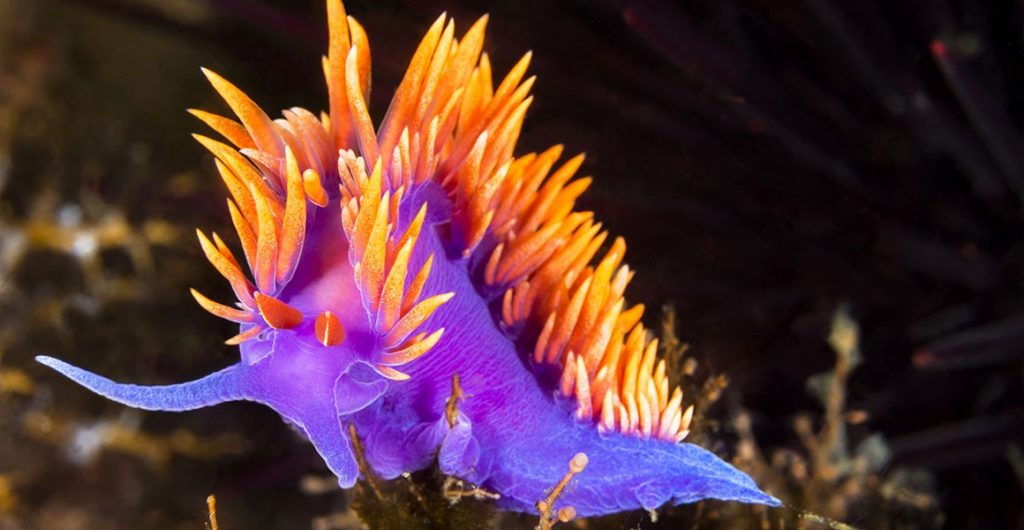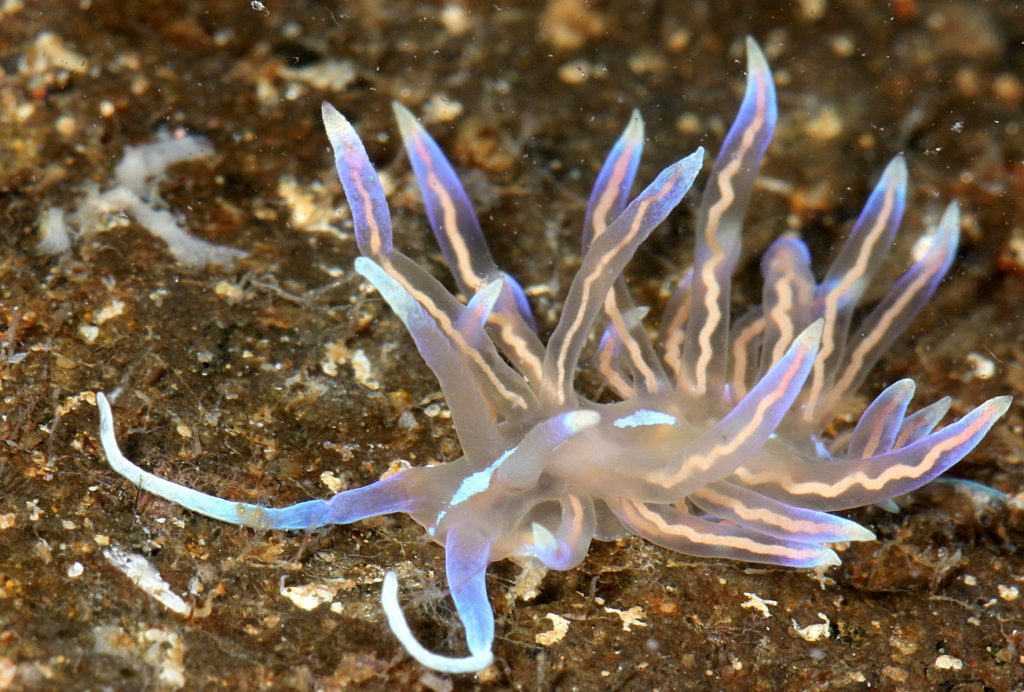Psychedelic thieves of the sea: Nudibranch
A lot of people does not notice this little cute tiny animal that crawling and slugging on a coral when they went for a dive. Nudibranchs, a group of soft-bodied, marine gastropod molluscs that have colourful body and striking forms. They also have funny and cute nicknames to match their appearances such as clown, marigold, splendid, dancer, dragon, and sea rabbit. There are approximately 3000 valid species of nudibranchs recognized around the globe. They also known as sea slugs and psychedelic thieves of the sea. The average life span of a nudibranch can up to one years and average size maximum is 12 inches that equivalent to a teacup. This bottom-dwelling may be found throughout the world’s oceans especially in shallow and tropical waters. Nudibranchia, carry the meaning of naked, feathery gills and horns that attached to their backs. Historically, in 1984, the commissioner of fisheries for Western Australia, William Saville-Kent was exploring the Houtman Abrolhos Islands for pearl farming when he spotted nudibranch which he thought is a sheep’s lung floating on the surface of the ocean. It is common to spot an organ sloshing when surfing as workers at the remote islands often killed sheep for food and tossed the offal. He thought the blood-red, footprint sized object was frilly which reminded him of a lung, he then watched it drift for a moment and identify it as a large nudibranch as he spotted exposed gills these animals have on their backs.
Nudibranch is benthic animal generally oblong in shapes, and can be thick or flattened, long or short, ornately coloured or drab to match their surroundings. Nudibranch is opisthobranchs, informal name for a large and diverse group of specialized complex gastropods. It can be divided into two main groups, Dorids and Aeolids. Dorids can be define as a nudibranch that have two structures on its back, a pair of rhinopores in the top of the head and a tuff of feathery gills on the back. It has a branchial plume surrounding the anus. Whereas Aeolids have rhinophores with the back covered with numerous finger-like appendages called cerata, a branching extension of the digestive system consists of three purposes, breath, digestion, and defence besidesfunctioning as gills. The cerata epidermis involved exchange of gaseous as this component is really thin. Rhinophores, a chemical sensor looks loke tentacles located on the head of nudibranch is used to smell and taste and can be retracted for protection. Its eyes located below the tissue of the animal on the head near the brain, yet they cannot see actual images, just measures of light intensity. Nudibranch has a file like organ on the mouth called radula, a component with chitinous teeth produced by the radula sac and function to scrap off food.
Feeding behaviour of a nudibranch is different depending on the species and most of them are meticulous eaters. This sea slug feeds on sponges, tunicates, ascidia, bryozoans and cnidarians like anemones, soft corals, and hydroids. As a selective carnivore, nudibranch has a large capacity to digest its preys which tends to be toxic and the ability to use these toxic metabolites for their defence mechanisms. Spider and crabs are the primary enemies of nudibranch besides parasitic copepods. In addition, sea slugs are known to be hermaphrodites, an animal having both male and female sex organs or other sexual characteristics, although auto-fecundation is ought to be rare. This given the high ability for nudibranch to mate as they are notoriously solitary yet scattered in the ocean. Copulation or sexual intercourse commonly reciprocal, thus both functionality as male and female like giving and receiving sperm and both partners may lay eggs. After mating session, nudibranch lay its spiral eggs masses on or near the location of prey. Eggs are white in colour, but it might change to be pink, orange, or red influenced by their diet. Egg development of nudibranch takes about 5 to 50 days depending on the temperature. Eggs will develop into planktonic larvae which called veliger, with shell, that lose during metamorphosis once they started a journey as adult benthonic life. Nudibranch has sophisticate defensive systems in which they are evolving with series of strategies to protect themselves from predation. It caused dissuasive effect to their preys as they memorize the painful experience with previous predator so that it would not happen again in future. These defence systems, real chemical and biological weapons could have been either a post-adaptation to shell loss, either a pre-adaptation that made the shell loss possible. They also use escapism as some nudibranchs has muscular foot that secrete mucus to escape, sometimes even swimming though slower than fish. They also present some other defences such as tubercles with different size, shape and calcareous spicules in the mantle tissue that can heart the enemy. It also behaves like a lizard where nudibranch has developed an ability to drop parts of their body to confuse predators and escape. It is called autotomy and do not worry, it can be rapidly regenerated. In addition, this sea slugs can turn invisible by matching the texture and colour of the body to substrate they live on. Sometimes they can produce pigment to confuse predators. Their translucent body makes digestive system to be seen and the colour of sea slug’s body depends on the food source. The bright and spectacular colour of nudibranch is to tell and warn potential predators that they are not edible and harmful. This is known as aposematic colouration. They also secrete toxic chemicals such as sulphuric acid that can repel and kill animals near them. Although nudibranch can be fascinating, unique, and mesmerizing, these colourful exotic creatures are not advisable to be kept in an aquarium. It is only suitable to admire these marine gastropods in their natural ecosystem under the water as they are highly sensitive to acclimation and have specific diet. Some of nudibranch species are toxic when they are dead and decompose which then can affect or may kill other organisms.




